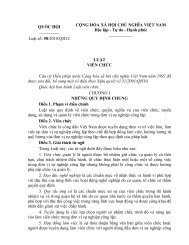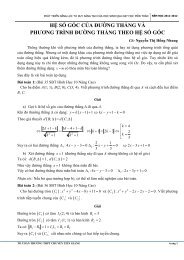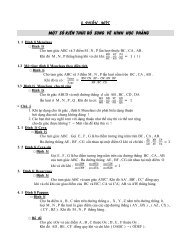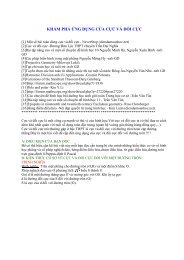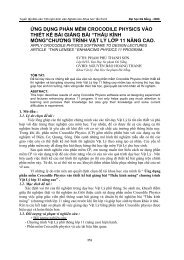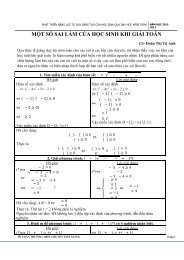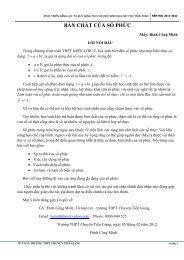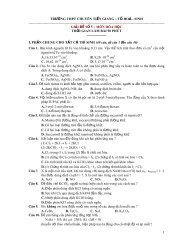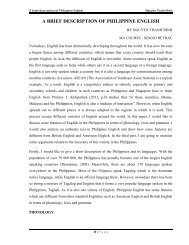103 Trigonometry Problems
103 Trigonometry Problems
103 Trigonometry Problems
You also want an ePaper? Increase the reach of your titles
YUMPU automatically turns print PDFs into web optimized ePapers that Google loves.
1. Trigonometric Fundamentals 25<br />
C<br />
C<br />
D<br />
D<br />
E<br />
B<br />
A<br />
B<br />
Figure 1.24.<br />
A<br />
Second Solution: Note that ̸ CDA = 60 ◦ and that sin 30 ◦ =<br />
2 1 . We construct point<br />
E on segment AD (Figure 1.24, right) such that CE ⊥ AD. Then in triangle CDE,<br />
̸ DCE = 30 ◦ and |DE| =|CD| sin ̸ DCE, or|CD| =2|DE|. Thus triangle<br />
BDE is isosceles with |DE| =|DB|, implying that ̸ DBE = ̸ DEB = 30 ◦ .<br />
Consequently, ̸ CBE = ̸ BCE = 30 ◦ and ̸ EBA = ̸ EAB = 15 ◦ , and so<br />
triangles BCE and BAE are both isosceles with |CE| =|BE| =|EA|. Hence<br />
the right triangle AEC is isosceles; that is, ̸ ACE = ̸ EAC = 45 ◦ . Therefore,<br />
̸ ACB = ̸ ACE + ̸ ECB = 75 ◦ .<br />
For a function f : A → B, iff (A) = B, then f is said to be surjective (or<br />
onto); that is, every b ∈ B is the image under f of some a ∈ A. If every two distinct<br />
elements a 1 and a 2 in A have distinct images, then f is injective (or one-to-one). If<br />
f is both injective and surjective, then f is bijective (or a bijection or a one-to-one<br />
correspondence).<br />
The sine and cosine functions are functions from the set of angles to the real<br />
numbers. The images of the two functions are the real numbers between −1 and 1.<br />
For a point P = (x, y) with polar coordinates (1,θ) on the unit circle, it is clear<br />
that the values x = cos θ and y = sin θ vary continuously from −1 to 1, taking<br />
on all intermediate values. Hence the functions are surjective functions from the<br />
set of angles to the interval [−1, 1]. On the other hand, these two functions are not<br />
one-to-one. It is not difficult to see that the sine function is a bijection between the<br />
set of angles α with −90 ◦ ≤ α ≤ 90 ◦ and the interval [−1, 1], and that the cosine<br />
function is a bijection between the set of angles α with 0 ◦ ≤ α ≤ 180 ◦ and the<br />
interval [−1, 1]. For abbreviation, we can write that sin :[−90 ◦ , 90 ◦ ]→[−1, 1] is<br />
a bijection. It is also not difficult to see that the tangent function is a bijection between<br />
the set of angles α with −90 ◦





